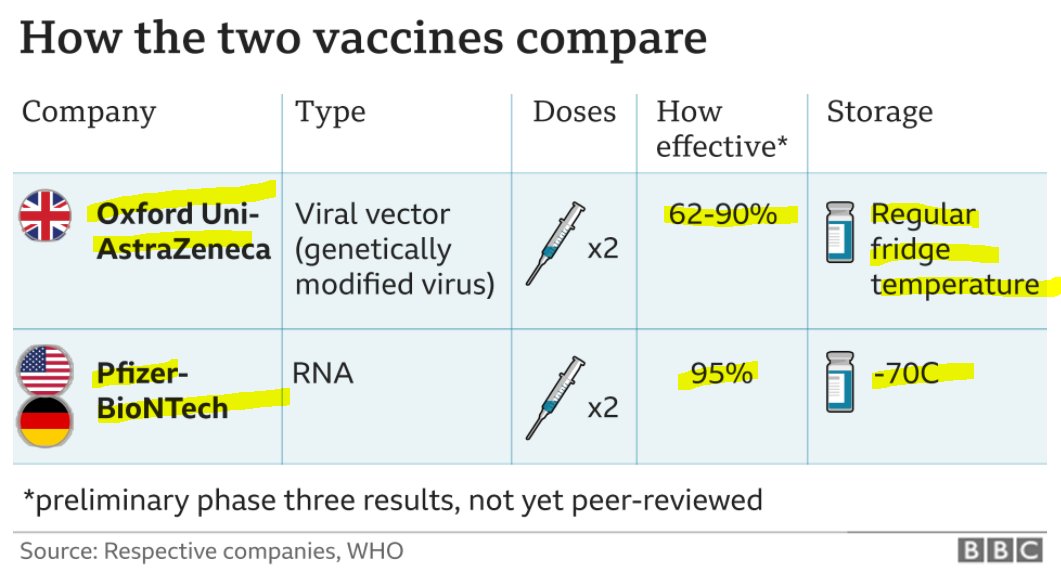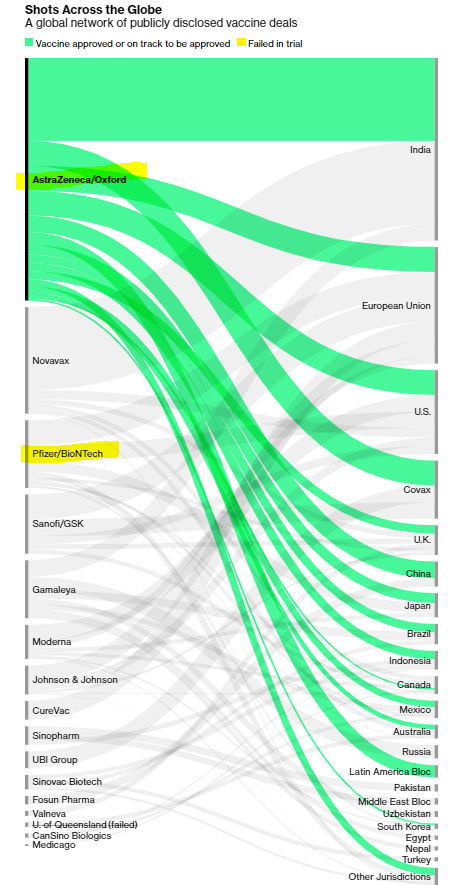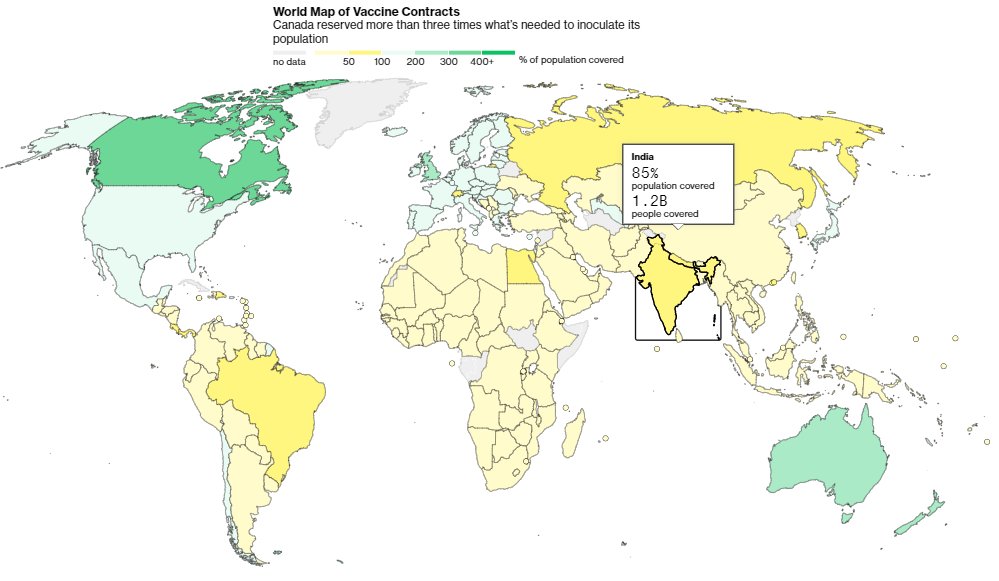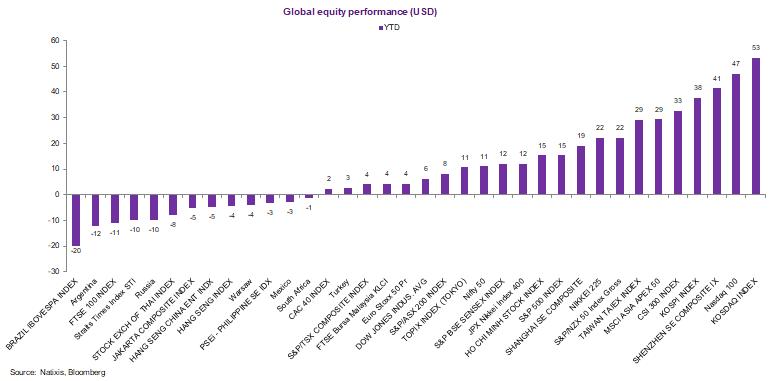
Vaccine facts:
The most widely purchased vaccine is AstraZeneca, developed by the UK, & produced by India The Serum Institute of India Ltd.
Why is AstraZeneca so popular? Well, its storage is so chill, as in literally & figuratively as it requires only regular refridgeration!
The most widely purchased vaccine is AstraZeneca, developed by the UK, & produced by India The Serum Institute of India Ltd.
Why is AstraZeneca so popular? Well, its storage is so chill, as in literally & figuratively as it requires only regular refridgeration!
AstraZeneca is not as effective but defo more user friendly so we're talking about volume vs quality & w/ Covid-19 raging & a wrecking ball of lives & economies, cheapo (in storage) is better.
While the UK & India haven't done well for Covid, maybe they'll shine via vaccines🤗.
While the UK & India haven't done well for Covid, maybe they'll shine via vaccines🤗.

And this is why AstraZeneca is so popular! Obvs India got tons (it got the most doses of vaccines in the world w/ 2.2bn of Astra + Novavax). Meanwhile, did you know that Brazil is signing up for AstraZeneca too? So that's your South-South EM connection on Brazil & India 🇧🇷🇮🇳💉. 

This is the map which I show India having 1.2bn people covered or 85% of population (u need 2 doses per person). So the question is whether India can distribute its vaccines rapidly & that gives it space to normalize!!! 

So in India, we got Astra approved (produced in India where 60% of global vaccines are created) & also it has its own home grown vaccine of Covaxin. Controversy w/ Covaxin is that approved in clinical trial mode (gov backed). Either way, India is key in the global vaccine drive.
Here's another fact about India, despite seeming rather chaotic from the outside world, it actually runs the world's largest immunization program targeting 55m people - mainly newborns & pregnant women - who receive some 390m free doses of vaccines against a dozen diseases/year👏🏻
How is India gonna vaccinate 1.4bn people? It is expected to start in January & reach 300m by August (that's roughly 90% of US population) & will start w/ 10mn health workers, followed by policemen, soldiers, municipal & other front line workers & >50 yrs w/ underlying conditions
Apparently India is going to have 154k out of 223k of nurses & midwives to give Covid vaccines to people + inviting final year nursing students to volunteer.
29k existing cold storage facilities to stock & nearly all vaccines need to be transported & distributed between 2C & 8C!
29k existing cold storage facilities to stock & nearly all vaccines need to be transported & distributed between 2C & 8C!
Finally, did you know that many of the vaccines today are funded by the US, obvs US ones, but also UK ones like Astra thanks to Operation Warp Speed program that has helped subsidize development and manufacturing of half a dozen novel vaccines.🇺🇸👏🏻
Details here of funding of development of vaccines (basically all the big ones, including Astra UK):
hhs.gov/coronavirus/ex…
hhs.gov/coronavirus/ex…
• • •
Missing some Tweet in this thread? You can try to
force a refresh












